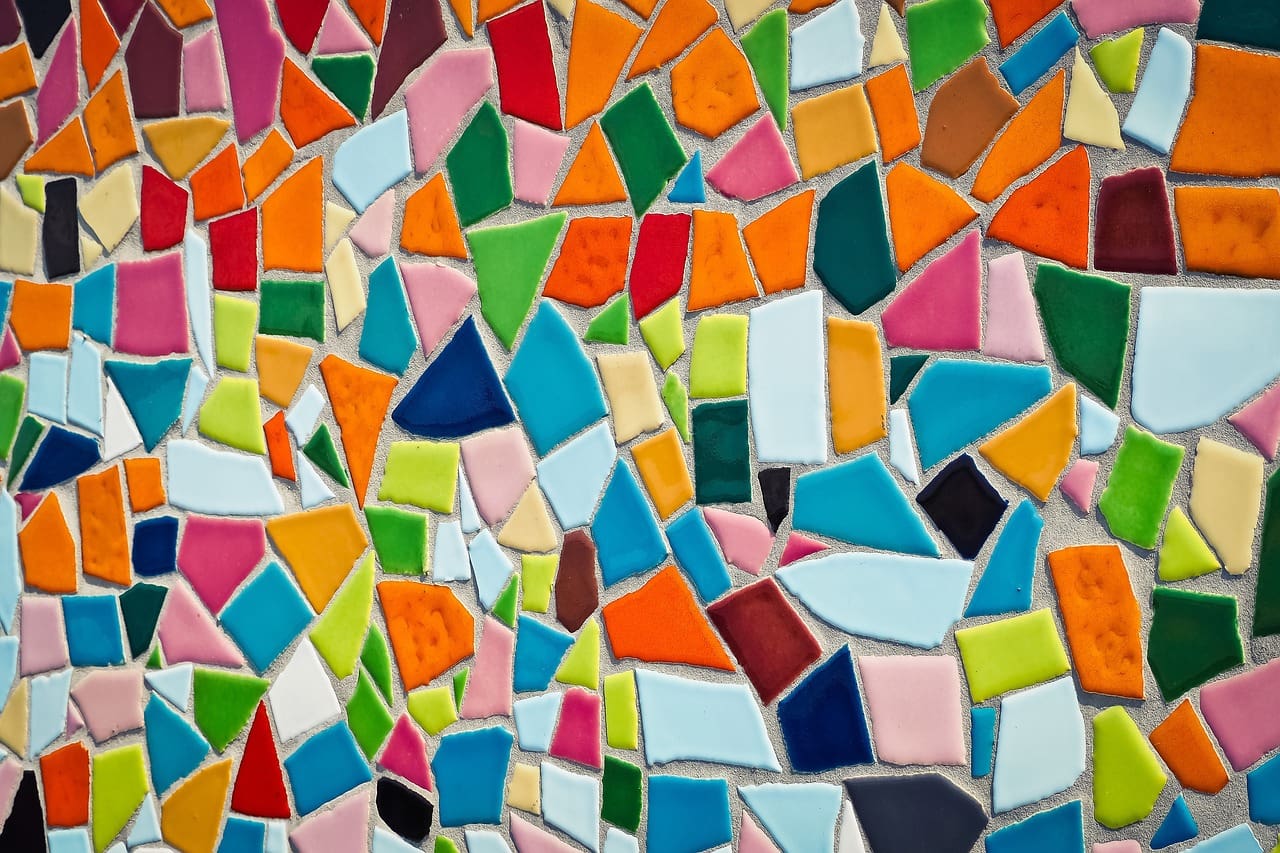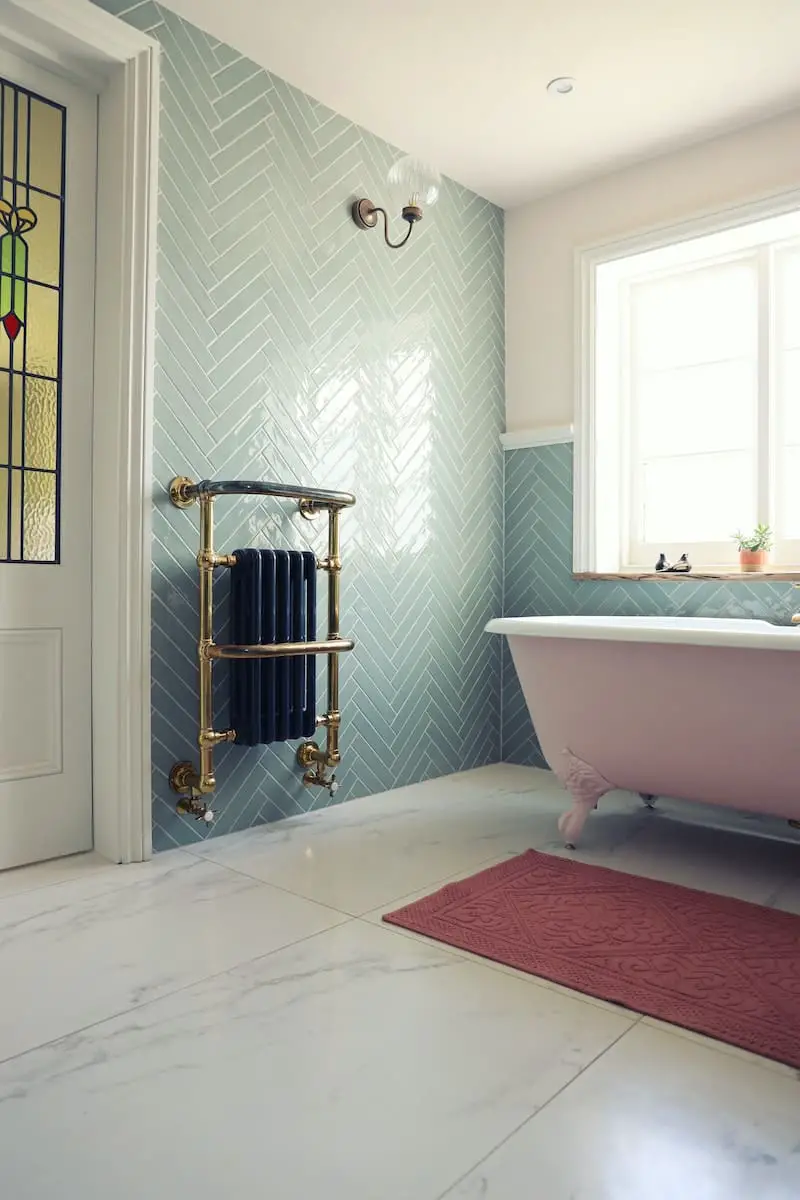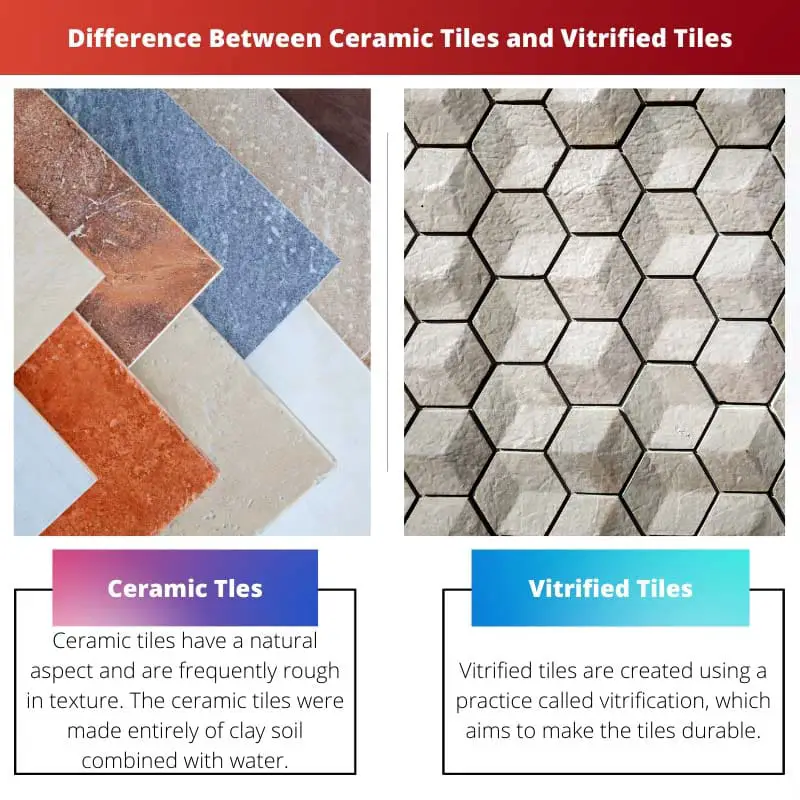In many homes, tiles are an important aspect of the interior and external décor. Ceramics are the most popular, divided into two types: natural ceramic and vitrified tiles.
The vitrified tiles resemble ceramic, but they’ve been further treated to seem glossy & reduced porous. If you don’t understand the critical distinctions between ceramic and vitrified, it can be not easy to pick between the two.
Key Takeaways
- Ceramic tiles are made from clay, water, and minerals and are fired at high temperatures.
- Vitrified tiles are ceramic tiles with a glass-like coating, providing improved durability and water resistance.
- Vitrified tiles are more expensive and have a better finish than ceramic tiles.
Ceramic Tiles vs Vitrified Tiles
The difference between ceramic tiles and vitrified tiles is that Ceramic tiles are not as durable as vitrified tiles. Vitrified surfaces are more durable & scratch-resistant. Glazing, on the other hand, makes ceramics considerably stronger. The installation of vitrified tiles is more complex than that of ceramic tiles. When someone is looking for water-resistant tiles, ceramic is not a good option.

Natural clay is combined with water and shaped to create ceramic tiles. The tile is then glazed to protect it from water and scratches before being fired in a kiln to freeze it.
Ceramic tiles are available in various colours and sizes, but they must always be glazed to ensure they are protected.
Vitrified tiles are comparable to ceramic tiles. However, they’re created with somewhat different materials. Before being fired inside the kiln, the clay is combined with feldspar and quartz.
These extra materials melt into the tile, forming a glassy element. The vitrified files are highly stable and resistant to absorption because of the glass component.
Comparison Table
| Parameters of Comparison | Ceramic Tiles | Vitrified Tiles |
|---|---|---|
| Composition | It is made of earthen clay. | The material used to make vitrified tiles is silica, quartz, and feldspar. |
| Strength | Less strong | Stronger |
| Appearance | Glossy if glaze applied | Glossy, glassy, and smoother |
| Absorbability | More water-absorbent | Less absorbent |
| Stains | Less resistant to stains | More resistant to stains |
What are Ceramic Tiles?
Ceramic tiles have a natural aspect and are frequently rough in texture. The ceramic tiles were made entirely of clay soil combined with water.
Ceramic tile’s disadvantage is that it is porous and retains additional water; as a result, it is not recommended for usage in regions with a lot of water.
Glazing, on the other hand, can improve water protection and strengthen the tile. Some of the tiles aren’t glazed.
Ceramic tiles are moulded and heated at extremely high temperatures after mixing with clay and water. Other composites can be added to increase the number of possibilities.
Ceramic tiles, for example, come in a variety of colours. Ceramic tiles are simple to install as well as replace.
On the other hand, the joints might be placed relatively far apart, allowing grout and filth to collect in the crevices.
Ceramic tiles are low-maintenance, so they’re ideal for high-traffic areas such such as kitchens and baths. Most often, soap and warm water will clean most of the dirt and grime.
That is why it is easy to manage in a building, and people prefer them.
Another feature that makes it home friendly is being watered absorbent, which makes it home nice and easy to maintain as it absorbs water.

What are Vitrified Tiles?
Vitrified tiles are created using a practice called vitrification, which aims to make the tiles durable.
Vitrified tiles look like ceramic tiles, although they are shinier, more arduous, less absorbent, & far less porous.
Such properties seem to be due to the combination of quartz crystals, silica, and feldspar, which provide the tile with a mirror appearance, trying to make it more appealing. Before the kiln is fired, the mixture is created.
Vitrified tiles, unlike ceramic tiles, have a crystalline texture due to the inclusion of glass elements in their construction. Clay is also utilized but in far fewer amounts than ceramic tiles.
Before heating the dye, it is combined with clay to create distinct hues. If you scratch the vitrified tiles, the colour will appear uniform throughout. Vitrified tiles are much more durable as a result of the method used.
Unlike ceramic tiles, vitrified tiles are never glazed. Instead, before the clay is baked, a dye is added to it. This dye gives the clay a consistent hue, so the colour will not fade even if the vitrified tile is scuffed.
Vitrified tiles are either polished or unpolished instead of glazed. Polished tiles have a dazzling gloss, but rough tiles have a grainy, more natural appearance.

Main Differences Between Ceramic Tiles and Vitrified Tiles
- Ceramic and vitrified tiles differ in that ceramic tiles are less durable than vitrified tiles. Vitrified surfaces are more scratch-resistant and durable. Glazing, on the other hand, significantly strengthens ceramics.
- If both tiles are compared based on their strength, ceramic tiles are proven to be stronger than vitrified tiles. Vitrified tiles carry more strength.
- The appearance of ceramic tile can be glossy when gloss is applied to it. In contrast, vitrified tile’s appearance is smooth, glossy, and glassy, which gives a better finishing after installation.
- If both tiles are differentiated based on absorbability, the ceramic tiles absorb more water than vitrified tiles. Vitrified tiles absorb less water.
- Stain resistance means how much a surface resists dirt or stains settling on them. Ceramic tiles are less dirt-resistant, whereas vitrified tiles are more stain-resistant than ceramic tiles.





